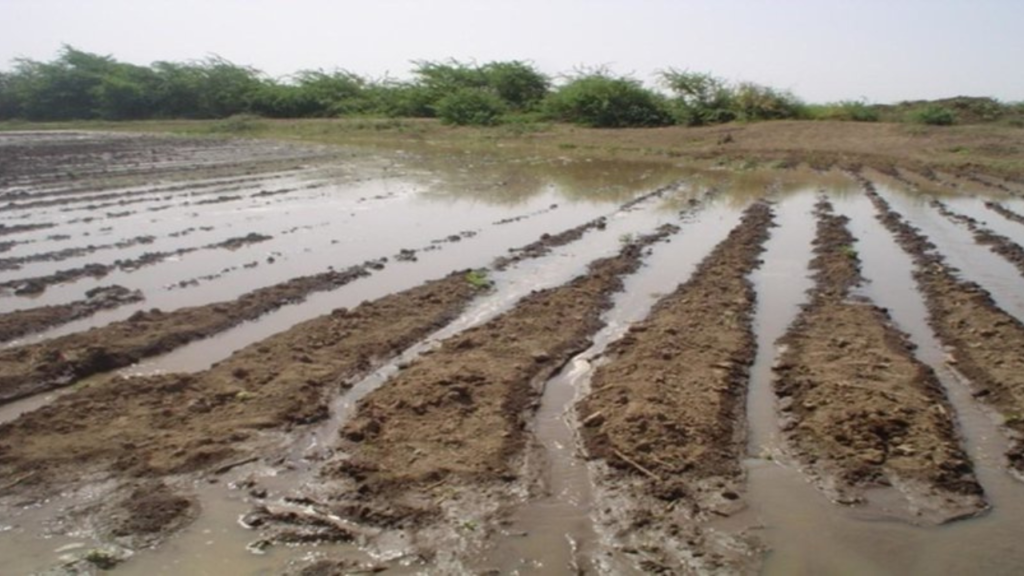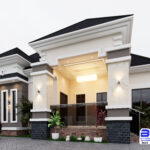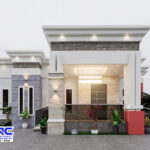When it comes to building a house or structure, the foundation is everything.
It’s what holds your building upright and ensures it lasts for generations.
However, not all foundations are created equal, and more importantly, not all foundations work well with all types of soil.
Using the wrong type of foundation for your soil can lead to cracks, settlement, or even building collapse.
That’s why it’s crucial to understand which foundation is suitable for which type of soil, especially in a country like Nigeria with its diverse soil conditions.
Bullionrise Consult will break down the common soil types in Nigeria and the best foundation types for each one.
Table of Contents
Toggle
1. Laterite Soil

Laterite is a reddish, clay-like soil found in many parts of Nigeria like Anambra, Enugu, Ekiti, and parts of Lagos.
It is stable and firm when compacted.
Best Foundation Type:
- Strip Foundation
- Pad Foundation (for light structures)
Why?
Laterite has good load-bearing capacity and low water absorption when compacted.
Strip foundations work perfectly and are cost-effective for bungalows and duplexes.
See also – How deep is the foundation of a house in Nigeria?
2. Sandy Soil

Sandy soil is common in coastal and riverine areas like Lagos, Warri, and Port Harcourt.
It drains water quickly but doesn’t bind well.
Best Foundation Type:
- Raft Foundation
- Pile Foundation (for high-rise or heavy structures)
Why?
Sandy soil lacks cohesion and may shift or erode easily.
Raft foundations spread the weight of the building, while pile foundations go deeper to reach stable layers.
3. Clay Soil

Clay soil is found in regions like Benue, Delta, and parts of Abuja.
It is sticky when wet and hard when dry.
It also expands and contracts with moisture changes.
Best Foundation Type:
- Raft Foundation
- Pile Foundation
Why?
Clay soil is highly reactive to moisture, leading to movement and cracks.
Raft and pile foundations reduce these effects by either spreading loads or bypassing the clay layer entirely.
4. Swampy or Waterlogged Soil

Common in riverine and coastal areas (e.g., Lekki, Bayelsa, Port Harcourt), this soil is soft and saturated with water.
Best Foundation Type:
- Pile Foundation
- Floating/Mat Foundation
Why?
Swampy soils have low bearing capacity.
Pile foundations go deep into the earth to reach a more stable stratum, while mat foundations “float” over a large area to distribute the building’s weight.
5. Rocky Soil

Rocky soil is strong and found in areas like Jos, Kaduna, and parts of Ekiti and Abuja.
It’s hard to excavate but offers excellent support.
Best Foundation Type:
Shallow Foundation (Strip or Pad)
Why?
Because rock has very high load-bearing capacity, you don’t need deep foundations.
Shallow foundations work well and save cost.
6. Silty Soil

Silty soil is smooth and slippery when wet, and is often found near rivers and floodplains.
It retains moisture and has poor drainage.
Best Foundation Type:
- Raft Foundation
- Pile Foundation
Why?
Silty soil is unstable and prone to shifting, especially when wet.
Raft or pile foundations help manage movement and provide stability.
Conclusion
The type of soil on your land determines the best foundation to use.
Before building, it’s essential to carry out a geotechnical soil test to know the soil’s bearing capacity and moisture content.
Using the right foundation for your soil type ensures your building is safe, durable, and cost-efficient.
Always consult a qualified structural engineer and conduct a soil test before starting your building project.
It may cost you a little upfront, but it will save you millions in future repairs or disasters.
Frequently asked questions
What are the different types of foundations used in construction?
There are two main types: shallow foundations and deep foundations.
Shallow foundations, such as strip footings and raft foundations, are placed close to the surface and are suitable for lightweight structures.
Deep foundations, like pile and caisson foundations, extend deeper into the ground to support heavier buildings or structures on unstable soil.
Each type is chosen based on soil characteristics and building requirements.
How does soil type influence the choice of foundation?
Soil type determines the stability, load-bearing capacity, and drainage of the land, which directly impacts the foundation choice.
Strong soils like gravel can support shallow foundations, while weak soils like clay may require deep foundations to reach stable layers.
The presence of groundwater, erosion risks, and soil compaction also play a role in deciding the foundation type.
Proper soil testing helps ensure the foundation can safely support the building.
Which foundation is best for clay soil?
Deep foundations, such as pile foundations, are ideal for clay soil due to its tendency to expand and contract with moisture.
Piles extend below the unstable upper clay layers to reach firmer strata, providing stability.
Raft foundations can also be used, especially for lighter structures, as they distribute the weight evenly to avoid uneven settling.
Ensuring proper drainage is crucial to prevent water retention in clay soil.
What type of foundation is suitable for sandy soil?
Sandy soil is generally stable and drains well, making shallow foundations like strip footings or spread footings suitable.
These foundations distribute the load effectively without requiring deep excavation.
Raft foundations can also be used for larger or heavier buildings.
However, compaction of sandy soil is important to improve its load-bearing capacity before construction.
Are there specific foundations recommended for rocky or hard soil?
Rocky or hard soil can support shallow foundations such as strip footings or pad foundations due to its excellent load-bearing capacity.
In some cases, minimal excavation is required, as the natural hardness of the soil provides stability.
For larger structures, reinforced concrete foundations may be added to enhance the durability.
Rocky soil is one of the most favorable conditions for foundation construction.









